Over 19,697 visitors come to RKN’s House in Yadavagiri on a literary pilgrimage
By S.T. Ravikumar
The home of one of India’s most beloved and celebrated English-language authors R.K. Narayan (RKN) that has been converted into a museum now is seeing a steady stream of visitors.
From July 24, 2016 when the museum was opened, the place has recorded 19,697 visitors till date.
Though the number of visitors is less when compared to other places of interest in Mysuru, they are select and niche audience who are fans of the great writer who are familiar with the charms of the South Indian fictional town of Malgudi — RKN’s most lasting creation.
Located at D-14, Vivekananda Road at the opulent lane of Yadavagiri, the museum is a literary pilgrimage centre to students, teachers and research scholars of English literature. The house stands on a site measuring 90 ft x120 ft totalling 10,800 square feet. The house once owned by Rasipuram Krishnaswami Iyer Narayanaswami (R.K. Narayan (1906-2001) has been converted into a museum on the lines of the Shakespeare’s Memorial at Stratford-upon-Avon in Warwickshire, United Kingdom.
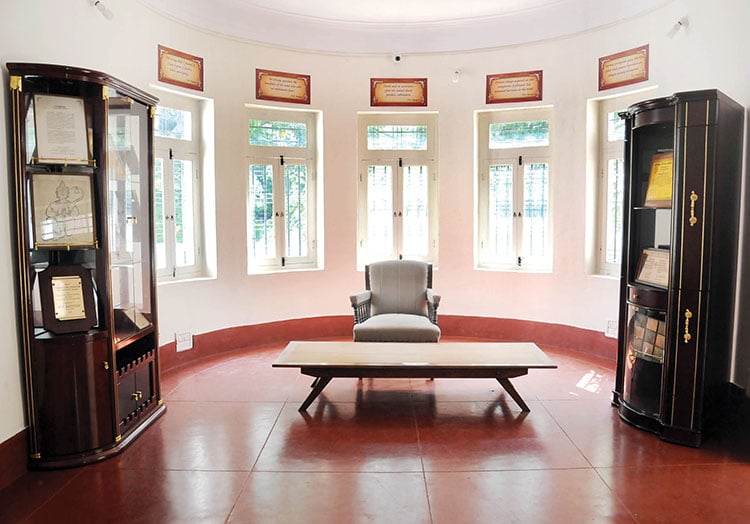
House saved from demolition
The house was acquired and restored by Mysuru City Corporation (MCC), Department of Archaeology, Museums and Heritage and the Mysuru Urban Development Authority (MUDA)at a cost of over Rs. 35 lakh. The bungalow, which was being demolished by a builder, was acquired by MCC, following public demand. It was later declared as a heritage property and purchased from Narayan’s grandchildren, Bhuvaneshwari and Srinivasan on 7.9.2011 for Rs. 2.4 crore with the funds allocated under Karnataka Urban and Rural Plan Act, 1961.
Dr. C.G. Betsurmath, the present Executive Secretary of JSS Mahavidyapeetha, was the then MUDA Commissioner (he later became the MCC Commissioner) when the acquisition was done and he played a vital role in taking over, renovating and converting the house as a museum.
House built in 1948
Narayan wrote in his autobiography, My Days, how he decided to build the house in 1948 after his landlord kept badgering him to vacate the rented home he had lived in for many years. He moved to the Yadavagiri house after five years. “I kept my Yadavagiri house as a retreat for writing,” he recalls in My Days. “I divided my time between Laxmipuram and Yadavagiri, enjoying the company of the family in one and of my books and papers in the other.”
A multi-storey luxury apartment was supposed to come up on the site. When this news began to spread, there was opposition to the demolition by fans of the writer and heritage activists in Mysuru. By the time the MUDA stepped in and declared the house a “heritage building”, some parts had already been knocked down. It took five years for the house to be renovated and converted into a museum.
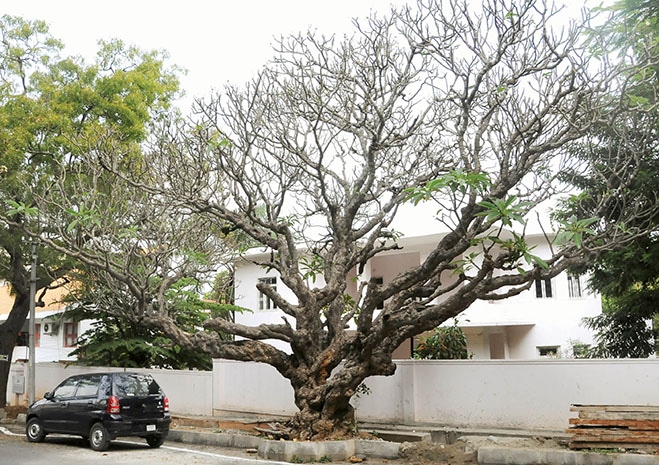
A befitting memorial
The saved, acquired, strengthened and refurbished house is a befitting memorial for the author who was known for his simplistic style of writing, ability to juxtapose fiction with reality and to subtly embed simple yet deep lessons in the minds of the readers. The building is called ‘R.K. Narayan’s House’.
RKN’s silver stainless steel plaque welcomes a visitor to a whitewashed sprawling building with a lush green garden and among them a large Frangipani tree. The double-storeyed house is pretty much like the man himself — Spartan. Its airy and sun-lit appearance, peeping through the greenery around, is the first thing that hits a visitor. The red cemented floor will take a visitor back by 50 years.
Exhibits in the museum
The ground floor exhibits his furniture, a luxurious chair and a writing table; the walls are studded with framed awards: Sahitya Akademi, Padma Bhushan and Padma Vibhushan, among others, honorary doctorate certificates, pictures of the writer when he was five, another with his wife in 1933, and his only daughter Hema and a family photograph. Narayan’s study, which he described as “a bay-room with eight windows affording me a view in every direction”, lies on the upper floor.
The first floor displays clothes and a small library. There is a pair of white shirts, a grey coat, a tattered sweater and a checked muffler. Narayan’s personal library, apart from his own books translated into various foreign languages, houses the works of literary giants like Gabriel Garcia Marquez, Ishiguro, Arthur Miller and Nietzsche.
Assortment of overcoats
This room also has a curved wall with five windows which used to give the writer a 180-degree view. It is said that these five windows showed him five different perspectives to look at the world outside. A staircase and inner verandah separate two more rooms and bathroom from the living area. Behind the main living room is a kitchen. Several of his shirts and an assortment of overcoats have also been put on display.
The museum is open for visitors from 10 am to 5 pm except on Tuesdays and national holidays. It is open on all Sundays, Second Saturdays and Fourth Saturday.
Anand Kumar is the supervisor and he says that on an average 10 to 100 visitors come to this house daily with a surge of visitors during the weekend. There is a Visitor’s Book where the views of people are recorded.
Minister Suresh Kumar’s role
BJP leader and Primary and Secondary Education Minister Suresh Kumar has heaped praises on the MCC and MUDA in his noting recorded on 3.7.2017 (when he was MLA). He says that the museum is a befitting tribute for the loved writer and appreciated the efforts of MCC and MUDA for saving the structure.
Notably, in September 2011, when locals began staging protests demanding that the Government preserve the building, Suresh Kumar was the then Urban Development Minister. He too showed interest in revamping the building and turning it into a museum.
Prakash and Vidya couple, based from Chennai and now settled in USA, had come to the museum recently along with their children Dhwani and Dhruthi. Vidya, an English teacher, said that the museum honours the writer’s memory. “Admirers of his writing can now look out of the same window like Narayan did while conjuring up the delightful world of Malgudi,” she told Star of Mysore.
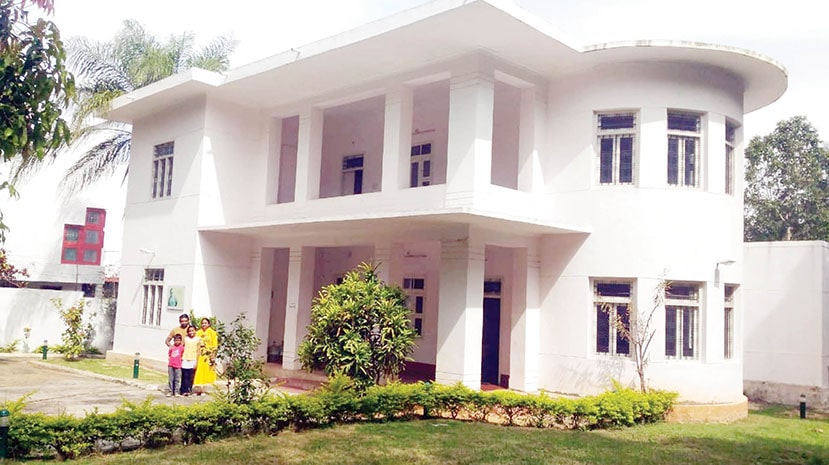
R.K. Narayan Circle works in limbo
The Mysuru City Corporation (MCC) has planned to convert the present Joy Ice-cream-Ideal Jawa Circle at Yadavagiri into R.K. Narayan Circle. It is a sprawling Circle where five roads meet and it is at a close distance to the ‘R.K. Narayan’s House’.
The MCC had some time back proposed to install a statue of R.K. Narayan playing with Swami, a character in his first novel ‘Swami and His Friends’ that he wrote in 1935 and published with Graham Greene’s support. Later, Narayan wrote continuously for almost 60 years. Swami is also a character in the serialisation of many of his stories in the television series “Malgudi Days” that contributed to the popularity of RKN’s work beyond the reading public.
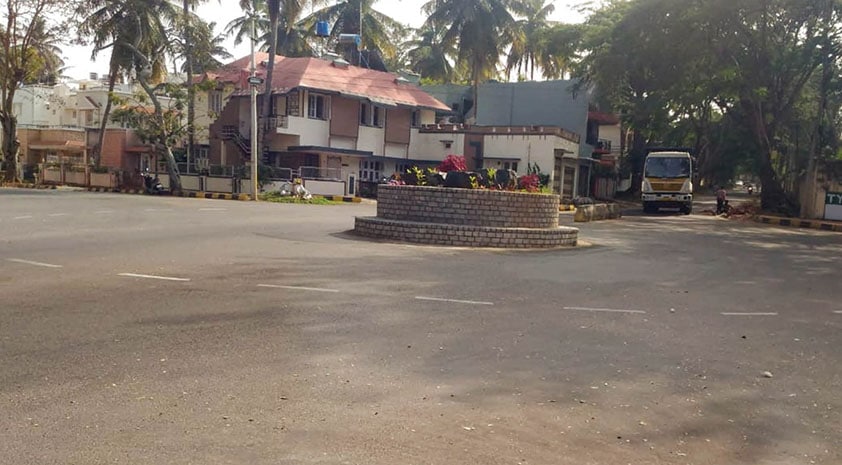
Through the statue, the MCC wanted people crossing the Circle relive the golden memories of the celebrated author and his little Swami. However, the works on the Circle did not take off though the MCC built a Circular Pedestal to house the statue.
There is a demand from a section of people around the area who want to erect the statue of Babasaheb Dr. B.R. Ambedkar there while another group wants the MCC to install a statue of the iconic Jawa Bike that was produced at the erstwhile Ideal Jawa Factory that functioned from Yadavagiri, a few metres from the Circle. Caught in the crossfire is Narayan-Swami statue as the MCC has kept the works pending.



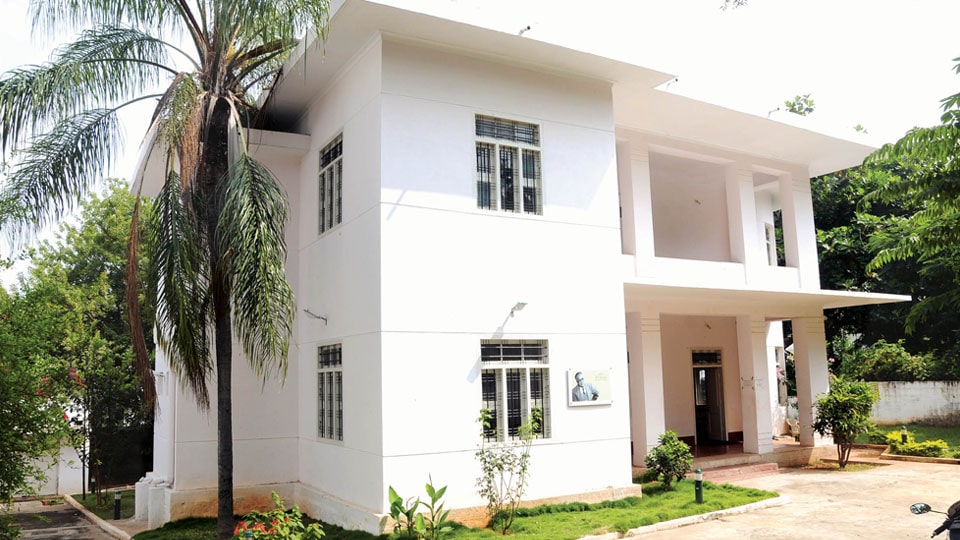
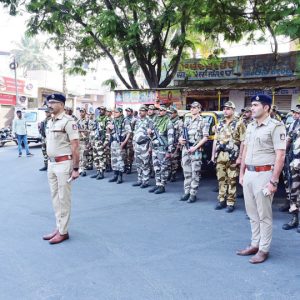
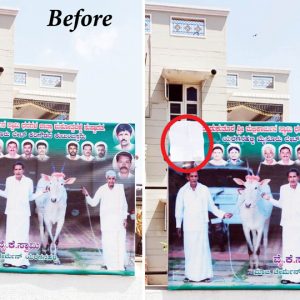
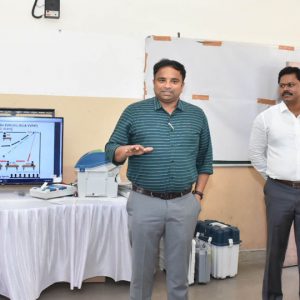
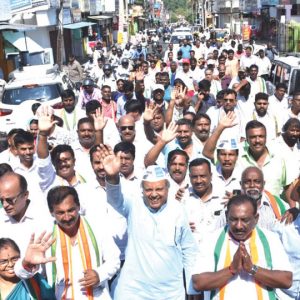
Recent Comments